![]() Published in Serbia - Warfare analysis - 25 Jun 2016 16:24 - 19
Published in Serbia - Warfare analysis - 25 Jun 2016 16:24 - 19
Tanks were an important weapons system in World War II. Although tanks were the subject of widespread research in the inter-war years, production was limited to relatively small numbers in a few countries. However, during World War II most armies employed tanks, and production levels reached thousands each month. Tank usage, doctrine and production varied widely among the combatant nations. By war's end, a consensus was emerging regarding tank doctrine and design.
Let's take a look at some well - known tanks (by nation) which decided the outcome of the World War II:
Soviet Union
T-34
The T-34 was a Soviet medium tank that had a profound and lasting effect on the field of tank design. Although its armor and armament were surped later in the war, it has been often credited as the most effective, efficient and influential tank design of the Second World War. At its introduction, the T-34 possessed an unprecedented combination of firepower, mobility, protection and ruggedness. Its 76.2 mm (3 in) high-velocity tank gun provided a substantial increase in firepower over any of its contemporaries; its heavy sloped armour was difficult to penetrate by most contemporary anti-tank weapons. When first encountered in 1941, the German tank general von Kleist called it "the finest tank in the world" and Heinz Guderian confirmed the T-34's "vast superiority" over existing German armor of the period.
The T-34 was the mainstay of Soviet armoured forces throughout the Second World War. Its design allowed it to be continuously refined to meet the constantly evolving needs of the Eastern Front: as the war went on it became more capable, but also quicker and cheaper to produce. Soviet industry would eventually produce over 80,000 T-34s of all variants, allowing steadily greater numbers to be fielded as the war progressed despite the loss of thousands in combat against the German Wehrmacht. Replacing many light and medium tanks in Red Army service, it was the most-produced tank of the war, as well as the second-most-produced tank of all time (after its successor, the T-54/55 series). Widely exported following the war, in 1996, T-34 variants were still in service in at least 27 countries.

KV-1
The second significant design was the KV-1 tank. The Kliment Voroshilov (KV) tanks were a series of Soviet heavy tanks named after the Soviet defense commissar and politician Kliment Voroshilov and used by the Red Army during World War II. The KV series were known for their heavy armour protection during the early part of the war, especially during the first year of the German invasion of the Soviet Union. In certain situations, even a single KV-1 or KV-2 supported by infantry was capable of halting the enemy's onslaught. German tanks at that time were rarely used in KV encounters as their armament was too poor to deal with the "Russischer Koloss" - "Russian Colossus."
Prior to Operation Barbarossa (the German invasion of the USSR), about 500 of the over 22,000 tanks then in Soviet service were of the KV-1 type. When the KV-1 appeared, it outcled the French Char B1, the only other heavy tank in operational service in the world at that time. Yet, in the end, it turned out that there was little sense in producing the expensive KV tanks, as the T-34 medium tank performed better (or at least equally well) in all practical respects. In fact the only advantage it had over the T-34-76 was its larger and roomier three-man turret. Later in the war, the KV series became a base for the development of the IS (IS - Josif Stalin) series of tanks.

United Kingdom
The British Army had developed two types of tanks - "Infantry Tanks" which were heavily armoured with good all terrain performance but were slow. This lack of speed was not considered a flaw as they were designed to support infantry aults on enemy strong points or urban warfare where the ability to outpace a man on foot was deemed unnecessary. The other type were "Cruiser Tanks" which were intended for independent maneuvering, rapid breakouts and flanking attacks. Early Cruiser tanks gained performance at a cost in the armour they could carry.
Cromwell
The Cromwell tank, or Tank, Cruiser, Mk VIII, Cromwell (A27M), was one of the most successful of the series of cruiser tanks fielded by Britain in the Second World War. Named after the English Civil War leader Oliver Cromwell, the Cromwell was the first tank put into service by the British to combine a dual-purpose gun, high speed from the powerful and reliable Meteor engine, and reasonable armour, in a balanced package. Its design formed the basis of the later Comet tank.
The Cromwell first saw action in the Battle of Normandy in June 1944. The tank equipped the armoured reconnaissance regiments of the Royal Armoured Corps, in the 7th Armoured Division, 11th Armoured Division and the Guards Armoured Division. While the armoured regiments of the latter two divisions were equipped with M4 Shermans, the armoured regiments of the 7th Armoured Division were equipped with Cromwell tanks. The Centaurs were not used in combat except for those fitted with a 95mm howitzer, which were used in support of the Royal Marines during the invasion of Normandy.

Churchill
The Tank, Infantry, Mk IV (A22) Churchill was a British heavy infantry tank used in the Second World War, best known for its heavy armour, large longitudinal chis with all-around tracks with multiple bogies, its ability to climb steep slopes, and its use as the basis of many specialist vehicles. It was one of the heaviest Allied tanks of the war.
The origins of the design lay in the expectation that war in Europe might be fought under similar conditions to those of the First World War, and emphasized the ability to cross difficult ground. The Churchill was rushed into production to build up British defences against a possible German invasion. The first vehicles had flaws that had to be overcome before the Churchill was accepted for wide use. After several Marks had been built, a better armoured version, the Mark VII, entered service.
The Churchill was used by British and Commonwealth forces in North Africa, Italy and North-West Europe. In addition, a few hundred were supplied to the USSR and used on the Eastern Front.
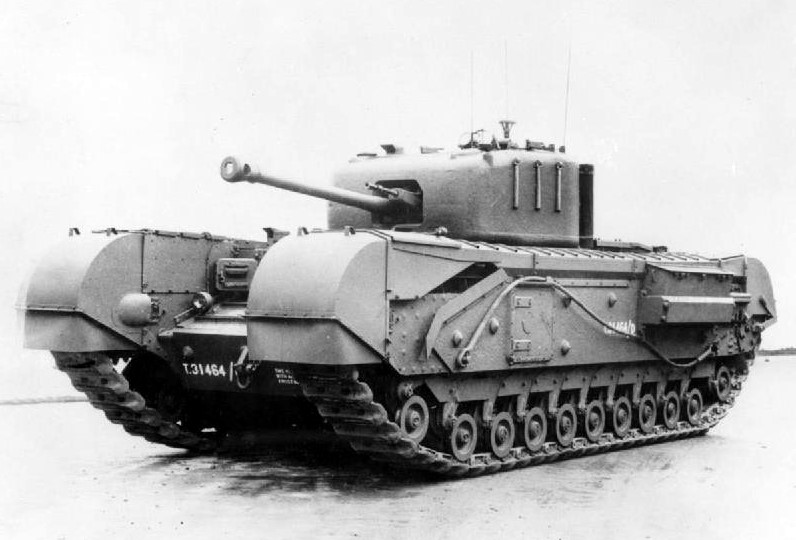
Germany
Tiger I
Tiger I was a German heavy tank of World War II deployed from 1942 in Africa and Europe usually in independent heavy tank battalions. Its final designation was Panzerkampfwagen VI Tiger Ausf. E often shortened to Tiger. The Tiger I gave the Wehrmacht its first armoured fighting vehicle that mounted the KwK 36 88-mm gun (not to be confused with the 8.8 cm Flak 36). Only 1,347 were built between August 1942 and August 1944. Production was phased out in favour of the Tiger II.
While the Tiger I has been called an outstanding design for its time, it was over-engineered,using expensive materials and labour-intensive production methods. The Tiger was prone to certain types of track failures and breakdowns, and was limited in range by its high fuel consumption. It was expensive to maintain, but generally mechanically reliable.It was also difficult to transport, and vulnerable to immobilization when mud, ice and snow froze between its overlapping and interleaved Schachtellaufwerk-pattern road wheels, often jamming them solid. This was a problem on the Eastern Front in the muddy rasputitsa season and during extreme periods of cold.
.jpg)
Panther
The Panther was a German medium tank deployed during World War II on the Eastern and Western Fronts in Europe from mid-1943 to its end in 1945. It had the ordnance inventory designation of Sd.Kfz. 171. Until 27 February 1944, it was designated as the Panzerkampfwagen V Panther when Hitler ordered that the Roman numeral "V" be deleted. Contemporary English language reports sometimes refer to it as the Mark V.
The Panther was intended to counter the Soviet T-34 and to replace the Panzer III and Panzer IV. Nevertheless, it served alongside the latter and the heavier Tiger I until the end of the war. It is considered one of the best tanks of World War II for its excellent firepower and protection. Its reliability was less impressive.
The Panther was a compromise. While having essentially the same engine as the Tiger I, it had more efficient frontal hull armour, better gun penetration, was lighter and faster, and could traverse rough terrain better than the Tiger I. The trade-off was weaker side armour, which made it vulnerable to flanking fire. The Panther proved to be effective in open country and long range engagements, but did not provide enough high explosive firepower against infantry.
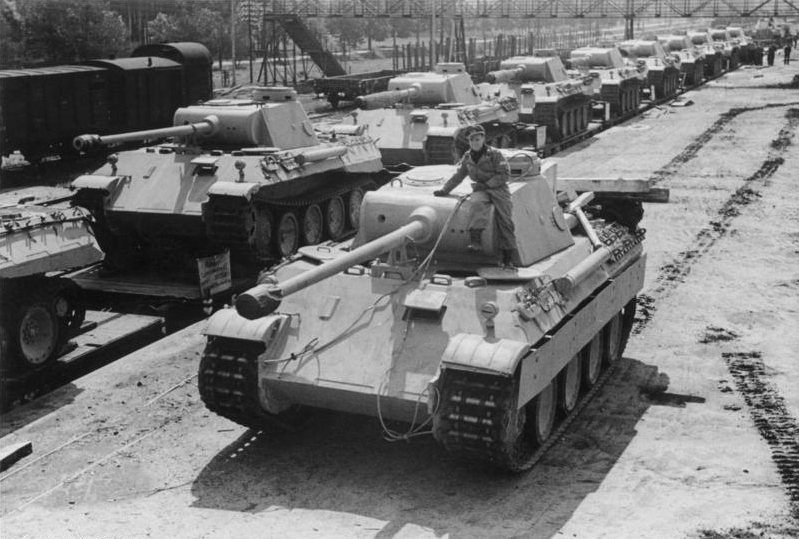
Thank you for reading, hope you enjoyed the article!
Part 2 coming soon!
Let's take a look at some well - known tanks (by nation) which decided the outcome of the World War II:
Soviet Union
T-34
The T-34 was a Soviet medium tank that had a profound and lasting effect on the field of tank design. Although its armor and armament were surped later in the war, it has been often credited as the most effective, efficient and influential tank design of the Second World War. At its introduction, the T-34 possessed an unprecedented combination of firepower, mobility, protection and ruggedness. Its 76.2 mm (3 in) high-velocity tank gun provided a substantial increase in firepower over any of its contemporaries; its heavy sloped armour was difficult to penetrate by most contemporary anti-tank weapons. When first encountered in 1941, the German tank general von Kleist called it "the finest tank in the world" and Heinz Guderian confirmed the T-34's "vast superiority" over existing German armor of the period.
The T-34 was the mainstay of Soviet armoured forces throughout the Second World War. Its design allowed it to be continuously refined to meet the constantly evolving needs of the Eastern Front: as the war went on it became more capable, but also quicker and cheaper to produce. Soviet industry would eventually produce over 80,000 T-34s of all variants, allowing steadily greater numbers to be fielded as the war progressed despite the loss of thousands in combat against the German Wehrmacht. Replacing many light and medium tanks in Red Army service, it was the most-produced tank of the war, as well as the second-most-produced tank of all time (after its successor, the T-54/55 series). Widely exported following the war, in 1996, T-34 variants were still in service in at least 27 countries.

KV-1
The second significant design was the KV-1 tank. The Kliment Voroshilov (KV) tanks were a series of Soviet heavy tanks named after the Soviet defense commissar and politician Kliment Voroshilov and used by the Red Army during World War II. The KV series were known for their heavy armour protection during the early part of the war, especially during the first year of the German invasion of the Soviet Union. In certain situations, even a single KV-1 or KV-2 supported by infantry was capable of halting the enemy's onslaught. German tanks at that time were rarely used in KV encounters as their armament was too poor to deal with the "Russischer Koloss" - "Russian Colossus."
Prior to Operation Barbarossa (the German invasion of the USSR), about 500 of the over 22,000 tanks then in Soviet service were of the KV-1 type. When the KV-1 appeared, it outcled the French Char B1, the only other heavy tank in operational service in the world at that time. Yet, in the end, it turned out that there was little sense in producing the expensive KV tanks, as the T-34 medium tank performed better (or at least equally well) in all practical respects. In fact the only advantage it had over the T-34-76 was its larger and roomier three-man turret. Later in the war, the KV series became a base for the development of the IS (IS - Josif Stalin) series of tanks.

United Kingdom
The British Army had developed two types of tanks - "Infantry Tanks" which were heavily armoured with good all terrain performance but were slow. This lack of speed was not considered a flaw as they were designed to support infantry aults on enemy strong points or urban warfare where the ability to outpace a man on foot was deemed unnecessary. The other type were "Cruiser Tanks" which were intended for independent maneuvering, rapid breakouts and flanking attacks. Early Cruiser tanks gained performance at a cost in the armour they could carry.
Cromwell
The Cromwell tank, or Tank, Cruiser, Mk VIII, Cromwell (A27M), was one of the most successful of the series of cruiser tanks fielded by Britain in the Second World War. Named after the English Civil War leader Oliver Cromwell, the Cromwell was the first tank put into service by the British to combine a dual-purpose gun, high speed from the powerful and reliable Meteor engine, and reasonable armour, in a balanced package. Its design formed the basis of the later Comet tank.
The Cromwell first saw action in the Battle of Normandy in June 1944. The tank equipped the armoured reconnaissance regiments of the Royal Armoured Corps, in the 7th Armoured Division, 11th Armoured Division and the Guards Armoured Division. While the armoured regiments of the latter two divisions were equipped with M4 Shermans, the armoured regiments of the 7th Armoured Division were equipped with Cromwell tanks. The Centaurs were not used in combat except for those fitted with a 95mm howitzer, which were used in support of the Royal Marines during the invasion of Normandy.

Churchill
The Tank, Infantry, Mk IV (A22) Churchill was a British heavy infantry tank used in the Second World War, best known for its heavy armour, large longitudinal chis with all-around tracks with multiple bogies, its ability to climb steep slopes, and its use as the basis of many specialist vehicles. It was one of the heaviest Allied tanks of the war.
The origins of the design lay in the expectation that war in Europe might be fought under similar conditions to those of the First World War, and emphasized the ability to cross difficult ground. The Churchill was rushed into production to build up British defences against a possible German invasion. The first vehicles had flaws that had to be overcome before the Churchill was accepted for wide use. After several Marks had been built, a better armoured version, the Mark VII, entered service.
The Churchill was used by British and Commonwealth forces in North Africa, Italy and North-West Europe. In addition, a few hundred were supplied to the USSR and used on the Eastern Front.

Germany
Tiger I
Tiger I was a German heavy tank of World War II deployed from 1942 in Africa and Europe usually in independent heavy tank battalions. Its final designation was Panzerkampfwagen VI Tiger Ausf. E often shortened to Tiger. The Tiger I gave the Wehrmacht its first armoured fighting vehicle that mounted the KwK 36 88-mm gun (not to be confused with the 8.8 cm Flak 36). Only 1,347 were built between August 1942 and August 1944. Production was phased out in favour of the Tiger II.
While the Tiger I has been called an outstanding design for its time, it was over-engineered,using expensive materials and labour-intensive production methods. The Tiger was prone to certain types of track failures and breakdowns, and was limited in range by its high fuel consumption. It was expensive to maintain, but generally mechanically reliable.It was also difficult to transport, and vulnerable to immobilization when mud, ice and snow froze between its overlapping and interleaved Schachtellaufwerk-pattern road wheels, often jamming them solid. This was a problem on the Eastern Front in the muddy rasputitsa season and during extreme periods of cold.
.jpg)
Panther
The Panther was a German medium tank deployed during World War II on the Eastern and Western Fronts in Europe from mid-1943 to its end in 1945. It had the ordnance inventory designation of Sd.Kfz. 171. Until 27 February 1944, it was designated as the Panzerkampfwagen V Panther when Hitler ordered that the Roman numeral "V" be deleted. Contemporary English language reports sometimes refer to it as the Mark V.
The Panther was intended to counter the Soviet T-34 and to replace the Panzer III and Panzer IV. Nevertheless, it served alongside the latter and the heavier Tiger I until the end of the war. It is considered one of the best tanks of World War II for its excellent firepower and protection. Its reliability was less impressive.
The Panther was a compromise. While having essentially the same engine as the Tiger I, it had more efficient frontal hull armour, better gun penetration, was lighter and faster, and could traverse rough terrain better than the Tiger I. The trade-off was weaker side armour, which made it vulnerable to flanking fire. The Panther proved to be effective in open country and long range engagements, but did not provide enough high explosive firepower against infantry.

Thank you for reading, hope you enjoyed the article!
Part 2 coming soon!
Support
Comments (19)

World of tanks  good game
good game 
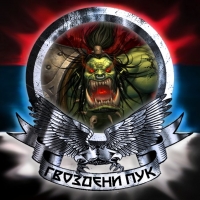
Yup! 
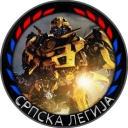
veri najs 

Hvala bumblebee o7
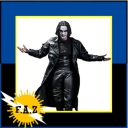
voted
very good

Thank you @Eric Draven! 
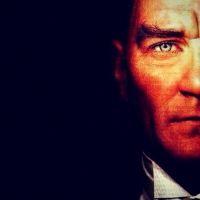
o7 Good article. Maybe you can add Panzer IV and Tiger II for Nazi Germany in Part 2. And you can add ISU-152 and IS-2 for USSR...
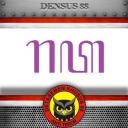
voted

@Tukyu thank you for the advice, there are too much iconic tanks in WW2, so its going to take a lot of my time to make an article about them lol. I might aswell include them in the next part, I will see 

voted
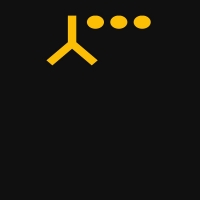
very good article!!! the best of best in WW2 was T34 (made by a great ing -Michail Koskinwith): medium tank, fast, easy for drive for everyy one, armoured inclined !!! when the soviet change the 75 with 85 mm guns, T34 was awersome. In my opinion actualy russian T-90 is the best too.
I wish you a good day!!! 

I wrote wrong the name of... Mihail Koșkin

Bravo, nastavi da pises.

Tehnoloski najbolji je bio Panter.Cena,masovnost,obuka i karakteristike ubedljivu pobedu odnosi ruski T-34.narocito verzija T-34-85.Tigar l je bio babaroga,zbog topa i oklopa u jednom kracem periodu,ali izuzetno skup,sklon kvarovima i totalno neprilagodjen tom ratistu,narocito po teskim uslovima.Uz sve to nije imao ni iskosen oklop.

Nemci su sve svoje uspehe u munjevitom ratu sto se tice oklopnih snaga ostvarili najvise zahvaljujuci Panzer lll i Panzer lV.Najkorisniji sveobuhvatno tenk na ruskom ratistu je bio Stug (cena,kvalitet,odrzavanje itd),tacnije lovac tenkova.
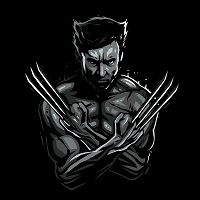
o7

@ Misrac  you do not need the best tank. In the war I never see a fight 1 tanck against 1 tanck. Army needs a good one that would cost less, be built quickly in large numbers to be accessible by everyone to be driving (in 1941 few people knew how to read, engine know) ...
yep! StuGIII was a very good gun assault. V Panther came too late,more expensive, Tiger I and Koenig Tiger too
you do not need the best tank. In the war I never see a fight 1 tanck against 1 tanck. Army needs a good one that would cost less, be built quickly in large numbers to be accessible by everyone to be driving (in 1941 few people knew how to read, engine know) ...
yep! StuGIII was a very good gun assault. V Panther came too late,more expensive, Tiger I and Koenig Tiger too
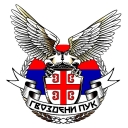
o7

add my mous plz  even thought he did not participate in wars, he is a monster
even thought he did not participate in wars, he is a monster 


